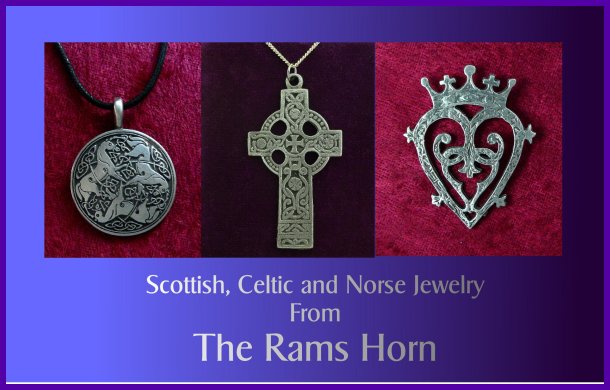A Prayer of Saint Columba
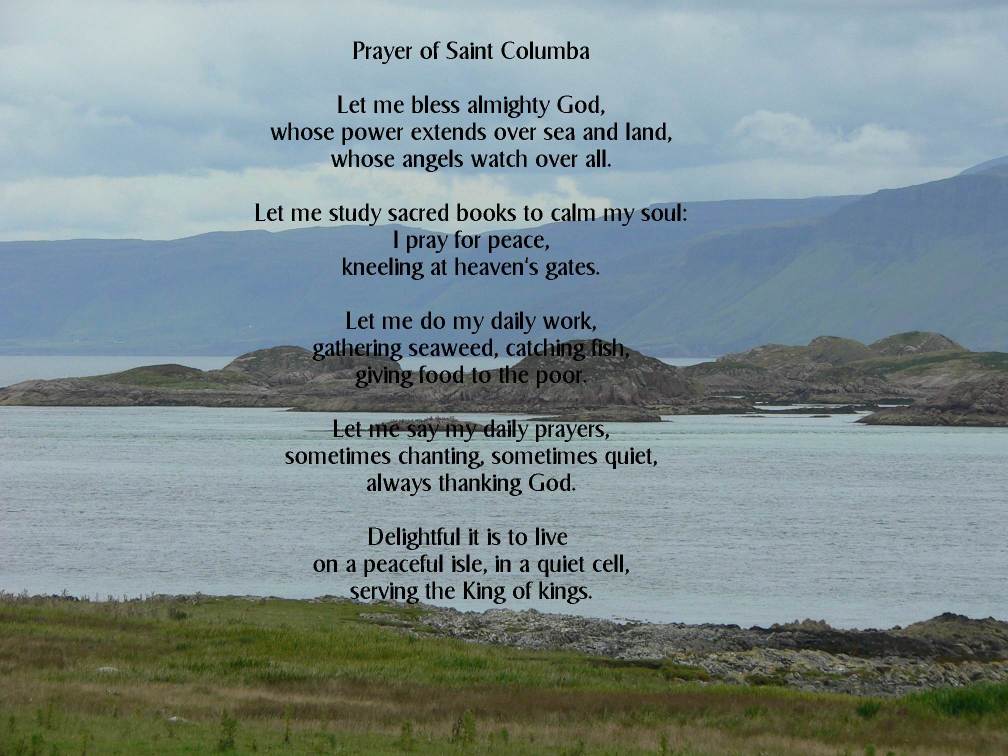
Sacred Isle of Iona
Saint Columba or Colmcille
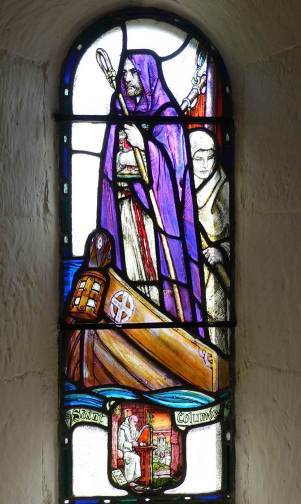 Saint Columba, Apostle to the Picts
Apostle of the Picts
Born December 7, 521, County Donegal, Ireland
Died June 9, 597 (aged 75), Iona, Scotland
Venerated in Roman Catholic Church
Eastern Orthodoxy
Lutheran Church
Anglican Communion
Major shrine Iona, Scotland
Feast June 9
Patronage floods, bookbinders, poets, Ireland, Scotland
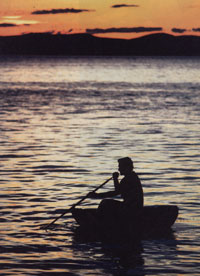 Early life in Ireland
Columba was born to Fedlimid and Eithne of the Cenel Conaill in Gartan, near Lough Gartan, County Donegal, in Ireland. On his father's side he was great-great-grandson of Niall of the Nine Hostages, an Irish high king of the 5th century.
In early Christian Ireland the druidic tradition collapsed due to the spread of the new Christian faith. The study of Latin learning and Christian theology in monasteries flourished. Columba became a pupil at the monastic school at Clonard Abbey, situated on the River Boyne in modern County Meath. During the sixth century, some of the most significant names in the history of Irish Christianity studied at the Clonard monastery. It is said that the average number of scholars under instruction at Clonard was 3,000. Twelve students who studied under St. Finian became known as the Twelve Apostles of Ireland, Columba was one of these. He became a monk and was ordained as a priest.
Tradition asserts that, sometime around 560, he became involved in a quarrel with Saint Finnian of Moville over a psalter. Columba copied the manuscript at the scriptorium under Saint Finnian, intending to keep the copy. Saint Finnian disputed his right to keep the copy. The dispute eventually led to the pitched Battle of Cúl Dreimhne in 561, during which many men were killed. A synod of clerics and scholars threatened to excommunicate him for these deaths, but St. Brendan of Birr spoke on his behalf with the result that he was allowed to go into exile instead. Columba suggested that he would work as a missionary in Scotland to help convert as many people as had been killed in the battle. He exiled himself from Ireland, to return only once again, several years later. Columba's copy of the psalter has been traditionally associated with the Cathach of St. Columba.
 Scotland
In 563 he travelled to Scotland with twelve companions, where according to his legend he first landed at the southern tip of the Kintyre peninsula, near Southend. However, being still in sight of his native land he moved further north up the west coast of Scotland. In 563 he was granted land on the island of Iona off the west coast of Scotland which became the centre of his evangelising mission to the Picts. However, there is a sense in which he was not leaving his native people, as the Irish Gaels had been colonizing the west coast of Scotland for the previous couple of centuries. Aside from the services he provided guiding the only centre of literacy in the region, his reputation as a holy man led to his role as a diplomat among the tribes; there are also many stories of miracles which he performed during his work to convert the Picts. He visited the pagan king Bridei, king of Fortriu, at his base in Inverness, winning the king's respect, although not his conversion. He subsequently played a major role in the politics of the country. He was also very energetic in his evangelical work, and, in addition to founding several churches in the Hebrides, he worked to turn his monastery at Iona into a school for missionaries. He was a renowned man of letters, having written several hymns and being credited with having transcribed 300 books. One of the few, if not the only, times he left Scotland after his arrival was toward the end of his life, when he returned to Ireland to found the monastery at Durrow. He died on Iona and was buried in the abbey he created.Several islands are named after Columba in Scotland, including Ì Chaluim Chille (one of the Scottish Gaelic names of Iona), Inchcolm and Eilean Chaluim Chille.
 Lasting legacy
Columba is credited as being a leading figure in the revitalization of monasticism, and "His achievements illustrated the importance of the Celtic church in bringing a revival of Christianity to Western Europe after the fall of the Roman Empire."[citation needed] It is said Clan Robertson are heirs of Columba. Clan MacKinnon may also have some claim to being descendant of St Columcille as after he founded his Church on Isle Iona, The MacKinnons were the abbotts to the Church for centuries. This would also account for the fact that Clan MacKinnon is among the ancient clans of Scotland.
The Parish of Saint Columbkille serves the neighborhood of Brighton, MA with a church and grammar school. The current church was built to be the Cathedral of the Roman Catholic Archdiocese of Boston since it is in the same neighborhood as the former Cardinal's residence, but does not serve in this function. Papillion, Nebraska also has a church and grammar school named after Saint Columbkille.
Today, Aer Lingus, Ireland's national flag carrier has named one of its A330 aircraft in commemoration of the saint (reg: EI-DUO).
Saint Columba is the patron saint of the city of Derry in Ireland. The saint founded a monastic settlement there in c. AD 540. The name of the city in Irish is Doire Colmcille and is derived from the native oak trees in the area and the city's association with the great saint. Today, the Roman Catholic Church of Saint Columba's Long Tower stands at the spot of this original settlement.
Vita Columbae
The main source of information about Columba's life is the Vita Columbae by Adomnán (also known as Eunan), the ninth Abbot of Iona, who died in 704. Both the Vita Columbae and Bede record Columba's visit to Bridei. Whereas Adomnán just tells us that Columba visited Bridei, Bede relates a later, perhaps Pictish tradition, whereby the saint actually converts the Pictish king. Another early source is a poem in praise of Columba, most probably commissioned by Columba's kinsman, the king of the Uí Néill clan. It was almost certainly written within three or four years of Columba's death and is the earliest vernacular poem in European history. It consists of 25 stanzas of four verses of seven syllables each.
The vita of Columba contains a story that has been interpreted as the first reference to the Loch Ness Monster. According to Adomnán, Columba came across a group of Picts who were burying a "poor little man" who had been killed by the monster, and saved a swimmer with the sign of the Cross and the imprecation "You will go no further," at which the beast fled terrified, to the amazement of the assembled Picts who glorified Columba's God. Whether or not this incident is true, Adomnan's text specifically states that the monster was swimming in the River Ness - the river flowing from the loch - rather than in Loch Ness itself.
Through the reputation of its venerable founder and its position as a major European centre of learning, Columba's Iona became a place of pilgrimage. A network of Celtic high crosses marking processional routes developed around his shrine at Iona.
Columba is historically revered as a warrior saint, and was often invoked for victory in battle. His relics were finally removed in 849 and divided between Alba and Ireland. Relics of Columba were carried before Scottish armies in the reliquary made at Iona in the mid-8th century, called the Brecbennoch. Legend has it that the Brecbennoch, was carried to Bannockburn by the vastly outnumbered Scots army and the intercession of the Saint helped them to victory. It is widely thought that the Monymusk Reliquary is this object.
O Columba spes Scotorum... "O Columba, hope of the Scots" begins a 13th century prayer in the Antiphoner of Inchcolm, the "Iona of the East."
A Prayer of St. Columba
Let me bless almighty God,
whose power extends over sea and land,
whose angels watch over all.
Let me study sacred books to calm my soul:
I pray for peace,
kneeling at heaven's gates.
Let me do my daily work,
gathering seaweed, catching fish,
giving food to the poor.
Let me say my daily prayers,
sometimes chanting, sometimes quiet,
always thanking God.
Delightful it is to live
on a peaceful isle, in a quiet cell,
serving the King of kings.
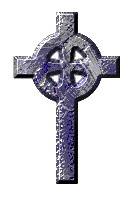 Links
'Feuch air fear coimhead Israil
Cadal chan aom no suain.'
(The Shepherd that keeps Israel
He slumbers not nor sleeps.)
 |
